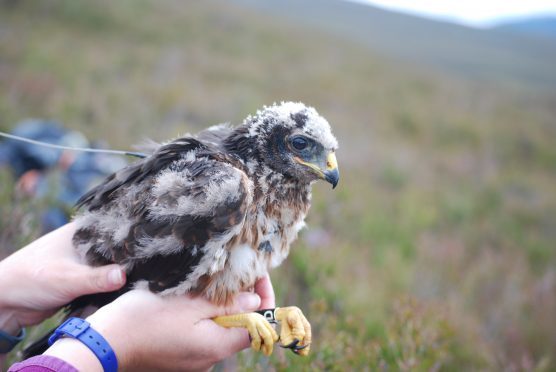One of the most persecuted birds of prey in the UK has bred on an Aberdeenshire estate for the first time in living memory.
Four hen harrier chicks have been born to a breeding pair on the Mar Lodge Estate.
The animals have been in decline across the UK for years, and were brought to the brink of extinction in Aberdeenshire during the Victorian era.
However last night their return to the area was hailed a victory for the species and the thriving habitat of the Cairngorms.
The chicks are three-and-a-half weeks old and will soon take to the skies of the scenic landscape as their fledging begins.
Last night David Frew, property manager at the estate said the hen harriers may have chosen to breed on the site due to a “combination” of the improving environment and the safety on offer.
He added: “We haven’t specifically been trying to encourage them to breed here, however hen harriers haven’t bred on Mar Lodge Estate in living memory.
“Our policy on the estate is an overall habit improvement and improvement in the conditions for all wildlife. It is a very holistic approach to conservation, and things have just started to come good.
“At a point where persecution is gone, certainly on Mar Lodge estate, they have chosen to return; which is good news.
“The fact that obviously they are as well protected as we can make them it due to positive change in habitat has combined to mean that they have been able to return.”
Mr Frew said the chicks were already showing signs of being ready to fly the nest “any day now”.
One of the chicks, a male, has now been tagged and enrolled on the Hen Harrier Life project.
The male and female were spotted by estate gamekeepers in spring.
Mr Frew added another paid had been spotted on the west of the estate, though they were not believed to be breeding.
He said “every little helps” when it came to boost hen harrier populations in Scotland.
He added: “At Mar Lodge estate we are really lucky we do really well with predators. We have four pairs of golden eagles breeding along with peregrines and merlins.”
